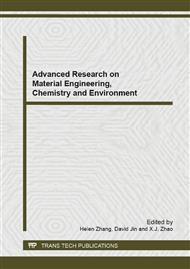p.57
p.61
p.65
p.69
p.73
p.77
p.81
p.85
p.89
Multi-Response Optimization of TiC-Cu P/M Composite Physical Properties
Abstract:
the present study investigates the relationship of powder metallurgy (P/M) process parameters with the properties of TiC-Cu composite produced .The response surface methodology (RSM) was employed for developing experimental models. Analysis on process parameters using powder metallurgy (P/M) was made based on the developed models. In this study, titanium carbide percent (TiC %), balling time, sintering temperature are considered as input process parameters. The properties such as conductivities,bend strength and Vickers hardness were evaluated. Analysis of variance test had also been carried out to check the adequacy of the developed regression models. TiC-Cu composites are found to be more sensitive to balling time and TiC percent than other parameters such as sintering temperature.
Info:
Periodical:
Pages:
73-76
Citation:
Online since:
September 2013
Authors:
Keywords:
Price:
Сopyright:
© 2013 Trans Tech Publications Ltd. All Rights Reserved
Share:
Citation:


